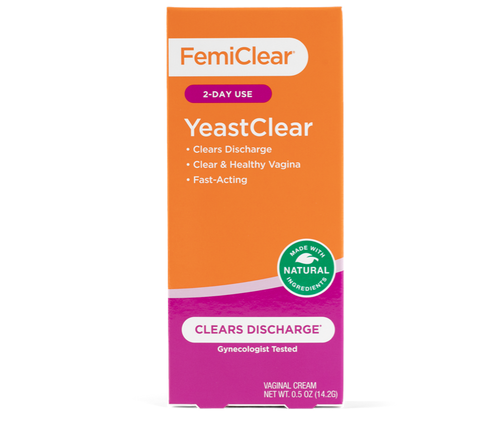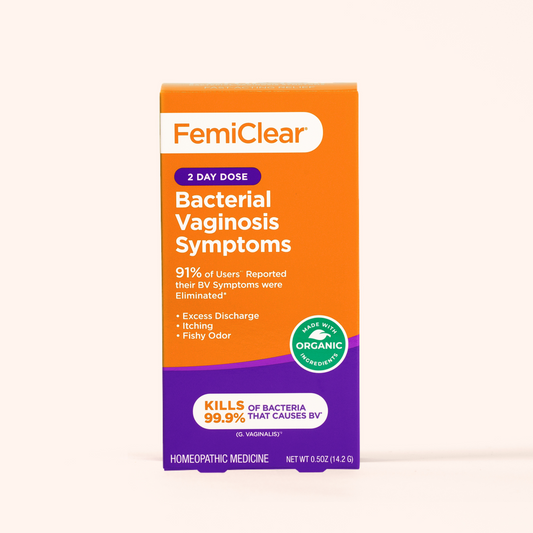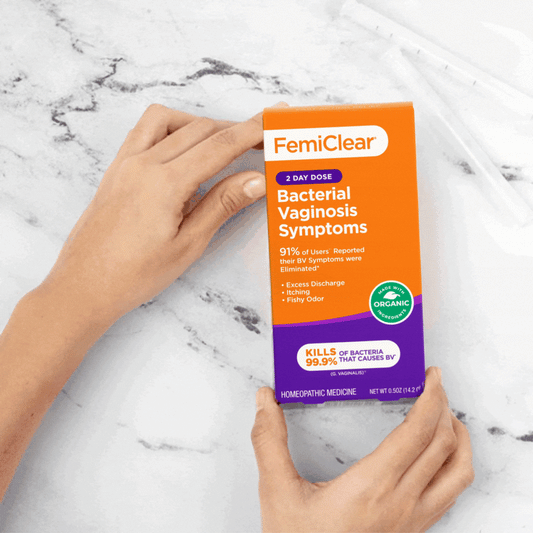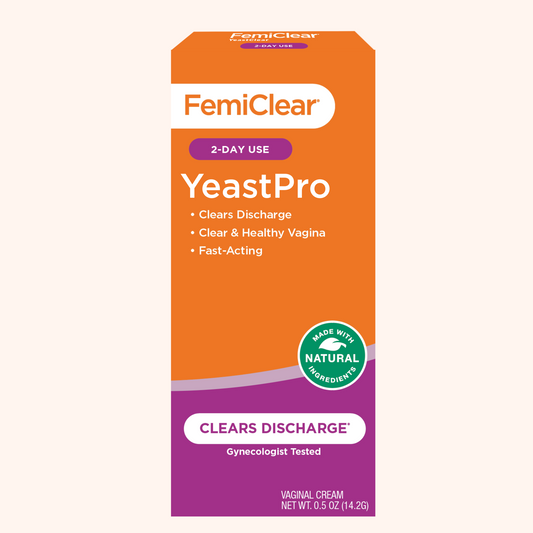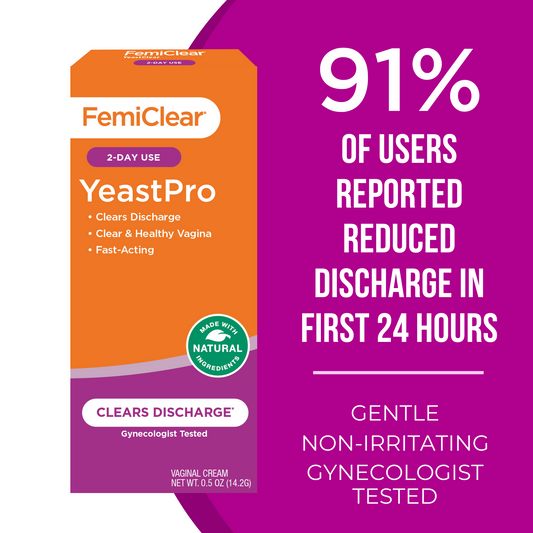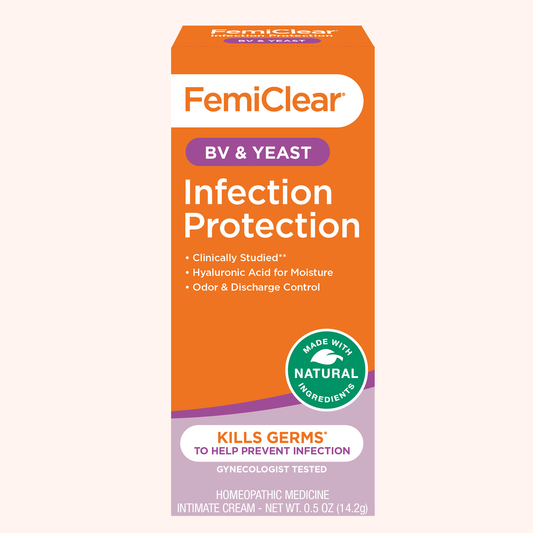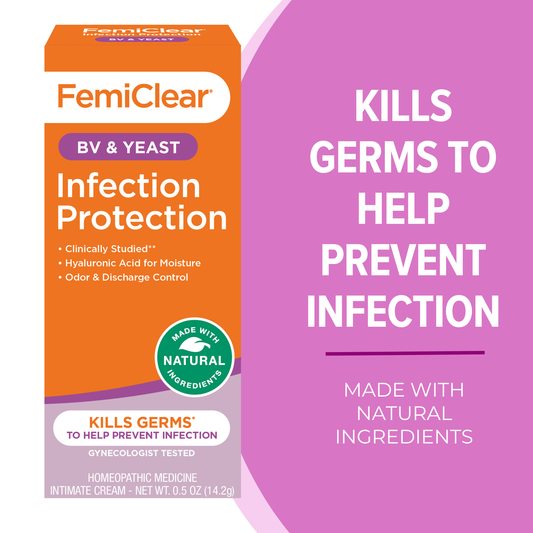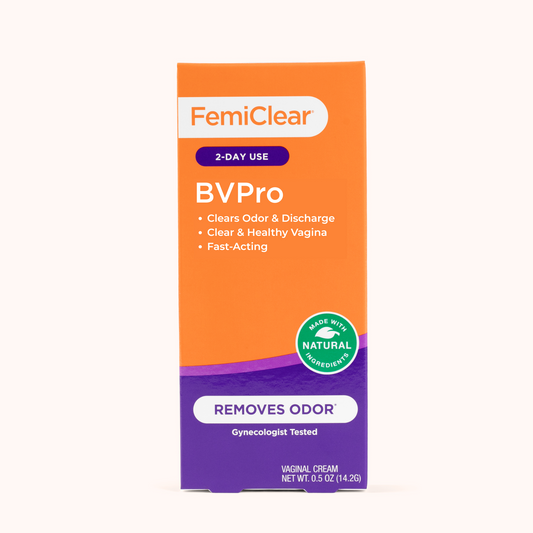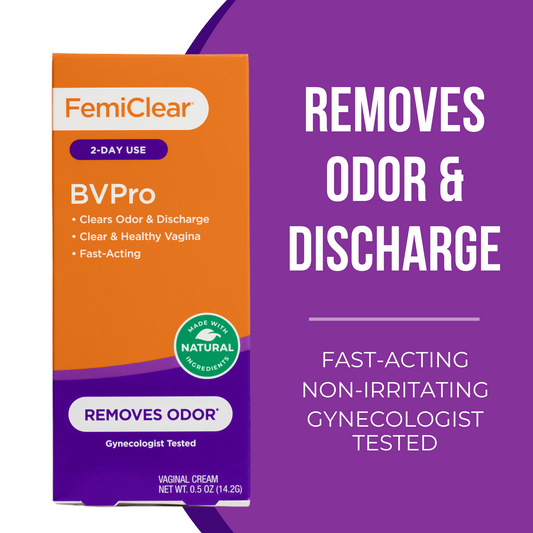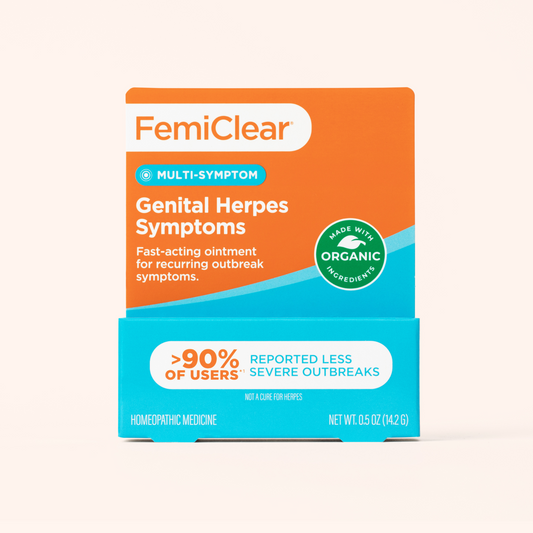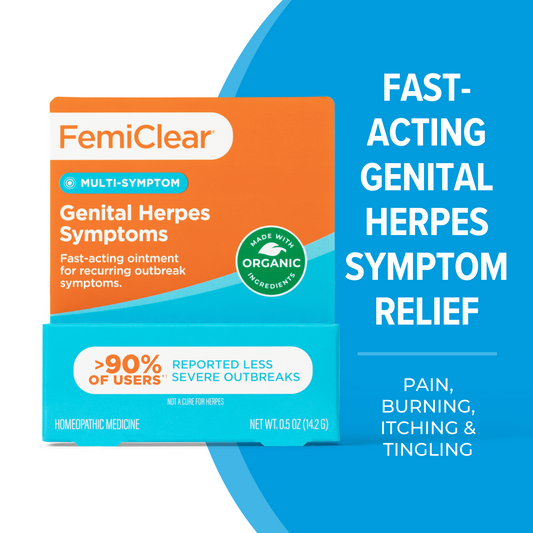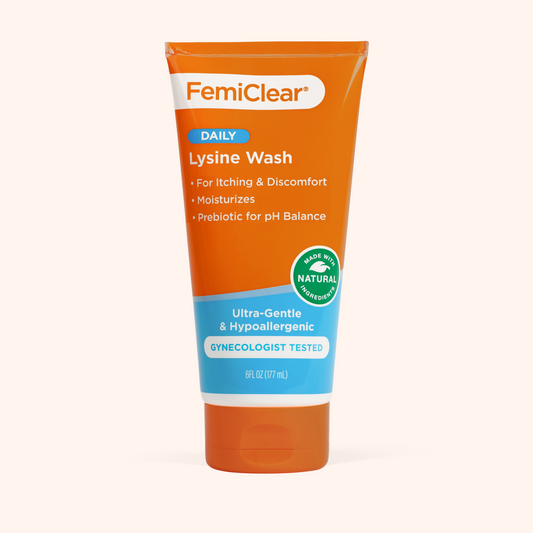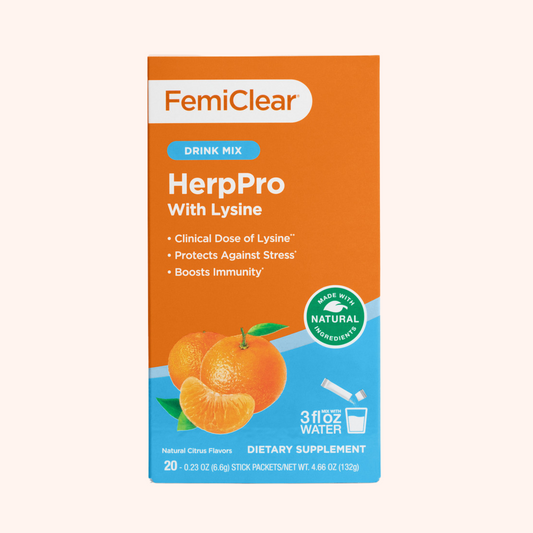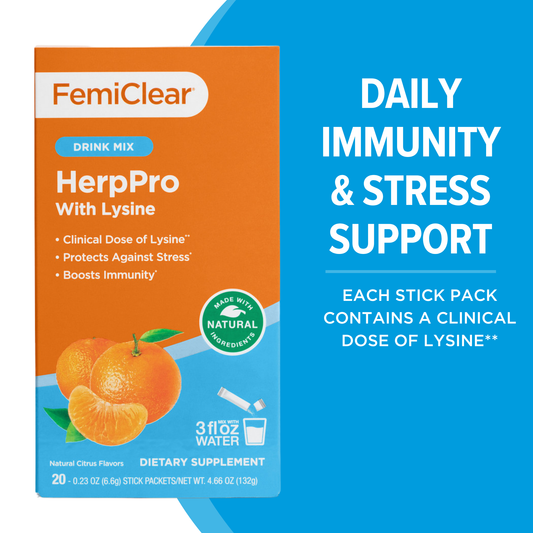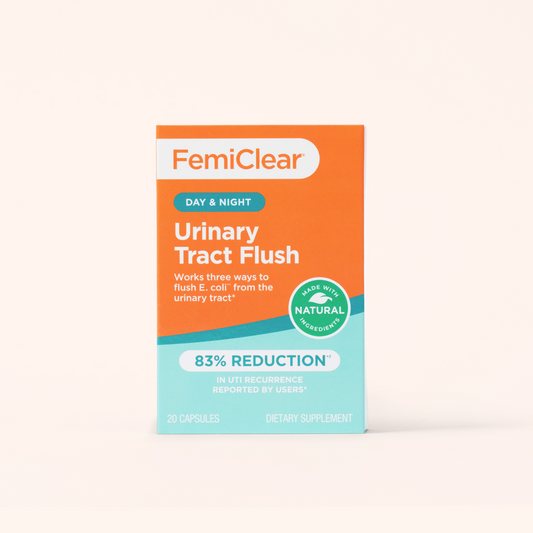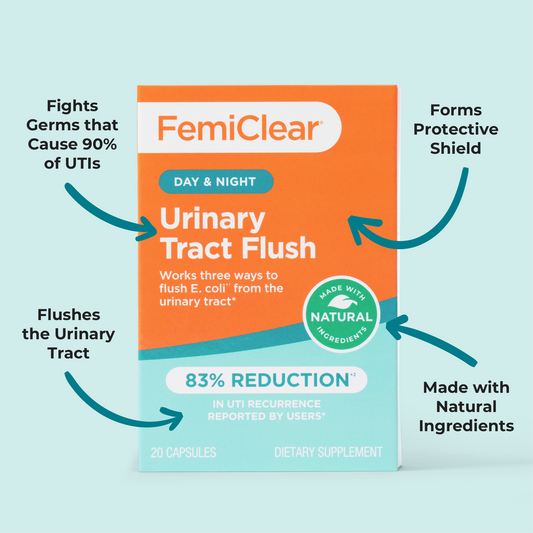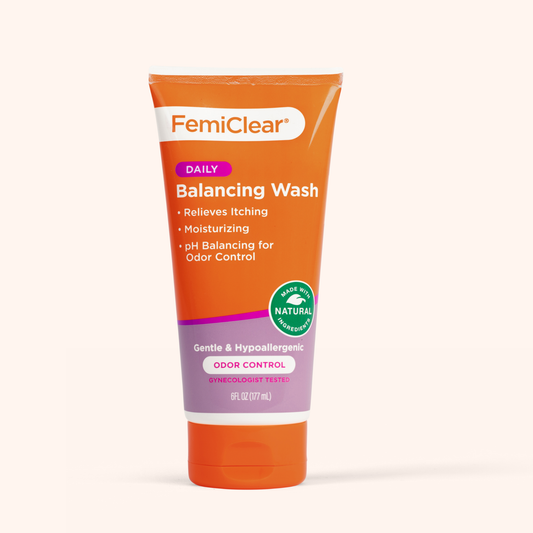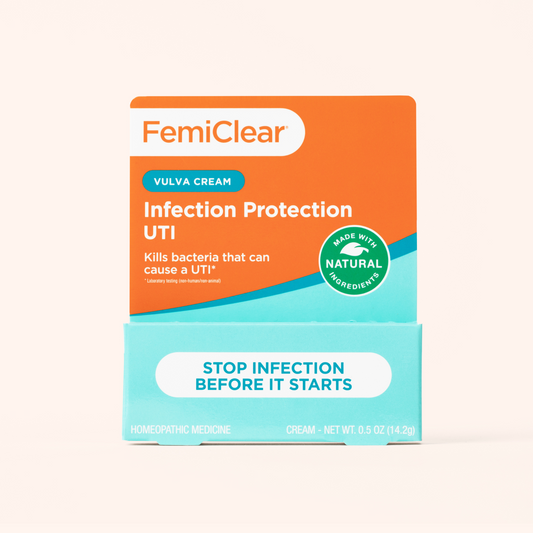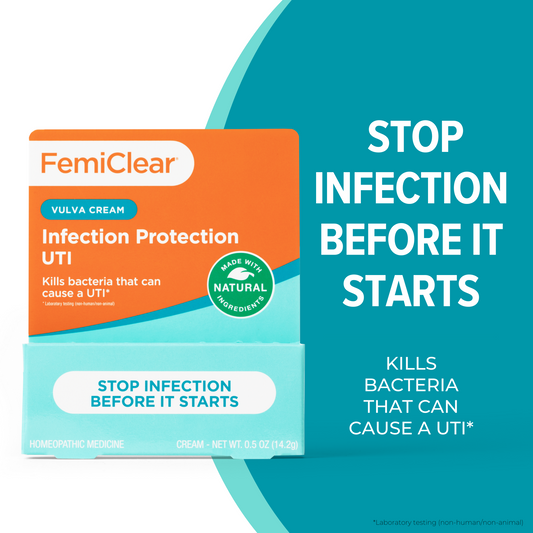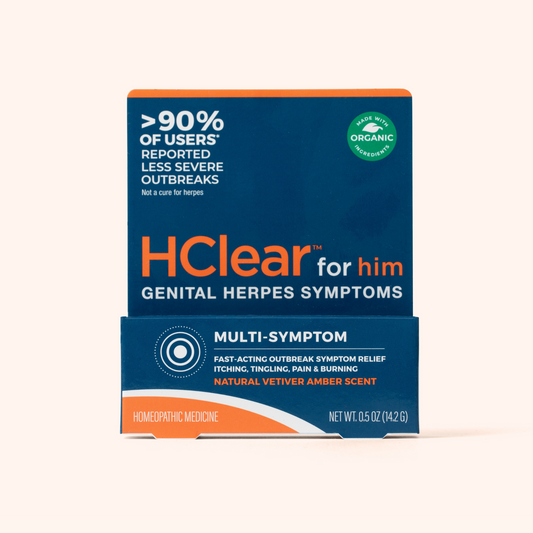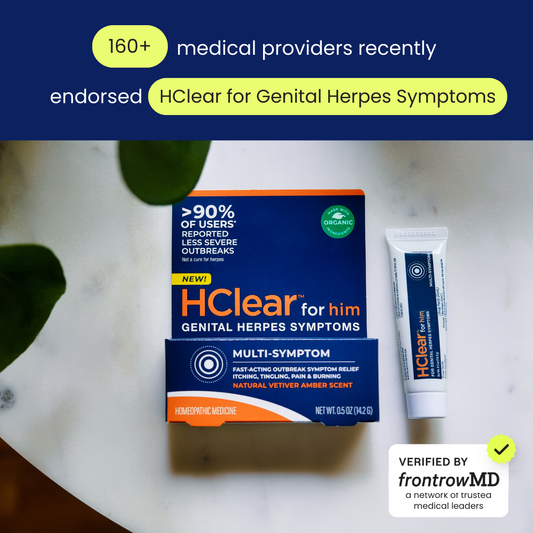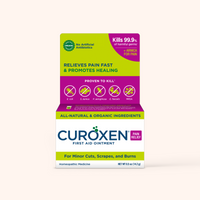Table of Contents
Asymptomatic Yeast Infections: Risks, Detection & Treatment | FemiClear
Oct 20, 2025

Understanding Asymptomatic Yeast Infections and Their Risks
Yeast infections (known as vaginal candidiasis) are fungal infections that cause itchiness, irritation, and discharge in the vagina and vulva. Three in four women will experience a yeast infection in their lifetime.
While often uncomfortable, yeast infections don't always cause symptoms. In these cases, it can be difficult to tell if you have a yeast infection, especially without the infection’s tell-tale signs like cottage cheese-like discharge.
It is important to see a doctor about a yeast infection even if you don't have any symptoms. Treatment can prevent it from getting worse or causing other complications. This article covers everything you need to know about having a yeast infection without symptoms.
Can You Have a Yeast Infection Without Symptoms?
Many people suspect they have a yeast infection due to itchiness, burning, and/or discharge that resembles cottage cheese.
However, it is possible to have a yeast infection with no symptoms. In fact, studies suggest that 10 to 20% of individuals diagnosed with yeast infections experience little to no symptoms.
Moreover, yeast infections share symptoms with other conditions such as bacterial vaginosis and sexually transmitted infections (STIs). This can make it difficult to tell if you have a yeast infection based on symptoms alone.
Several factors can increase your risk of experiencing an asymptomatic yeast infection. These include:
- Having a weakened immune system (being immunocompromised)
- Poorly managed diabetes
- Pregnancy
- Taking certain medications, like antibiotics
You might not suspect you have a yeast infection without symptoms. However, it is still important to seek a diagnosis and treatment even with no symptoms, especially if you have preexisting risk factors.
Causes of Asymptomatic Yeast Infections
A healthy vagina contains a balanced mix of microorganisms, including yeast and bacteria. However, if this balance is disrupted, an overgrowth of yeast can occur and cause symptoms associated with a yeast infection. 90% of yeast infections are caused by the yeast Candida.
Several factors can upset a healthy vaginal flora. These include:
- Taking medications:: Certain medications, like antibiotics, can kill bacteria and disrupt the natural balance of vaginal flora.
- Hormonal changes: Oral contraceptives and hormone therapy containing estrogen can interfere with the vagina’s natural flora.
- Weakened immune system: A compromised immune system increases the risk of yeast overgrowth.
- Pregnancy: Hormonal and pH changes during pregnancy can disrupt the vaginal flora and promote yeast growth.
- Uncontrolled diabetes: Fluctuations in blood sugar levels caused by poorly managed diabetes can affect the vaginal flora.
Being aware of increased risk factors and practicing good hygiene can prevent yeast infections.
What Happens If a Yeast Infection Goes Unnoticed?
Many people suspect they have a yeast infection because they have symptoms like discomfort and abnormal discharge. However, it can be hard to tell if you have a yeast infection or a different vaginal infection. Yeast infection symptoms range from mild to moderate and can include a wide range of symptoms such as:
- Abnormal discharge
- Odorless discharge that resembles cottage cheese
- Vaginal rash
- Itchiness and irritation in the vagina and vulva
- Vulva redness and swelling
- Burning sensation while peeing
- Painful intercourse
- Soreness and pain in vagina and vulva
Yeast infection symptoms can be so mild that they go unnoticed. Sometimes a mild yeast infection will clear up on its own. However, in most cases, the infection will get noticeably worse. Untreated yeast infections often cause increased itchiness, redness, and inflammation around the vaginal area. This can potentially lead to a skin infection if the infected area becomes cracked or continual itching creates open or raw areas. While rare, some untreated yeast infections can also contribute to fatigue, oral thrush, and gastrointestinal issues.
Regular checkups are important for catching and treating infections, even when asymptomatic, to prevent potential health complications.
How to Detect a Yeast Infection with No Symptoms
The best way to detect a yeast infection with no symptoms is by seeing a gynecologist. A gynecologist (GYN) is a medical doctor who specializes in the treatment of conditions and diseases affecting the reproductive system, including yeast infections.
Your GYN will likely do a visual and physical examination of your vaginal area and ask about your medical history and symptoms. After, they will perform a vaginal swab to collect a sample which can be tested for the presence of candida. The test will determine if you have a yeast infection, regardless of whether or not you have symptoms.
Yeast infections can be treated with over-the-counter medications, but you should still visit the doctor to confirm that you have an infection. According to the Office on Women’s Health, roughly 66% of women who buy and use over-the-counter yeast infection treatments do not actually have a yeast infection.
Taking yeast infection medication without having a yeast infection can further disrupt your vaginal flora and prevent you from getting the proper diagnosis and treatment for your symptoms. Yeast infection symptoms can mimic other conditions like bacterial vaginosis or STIs like chlamydia, gonorrhea, herpes, or trichomoniasis.
As a general rule of thumb, you should visit your doctor or GYN if:
- This is your first time experiencing yeast infection symptoms
- You are unsure if you have a yeast infection or another vaginal infection
- You develop symptoms that are not typical of yeast infections
- Your symptoms persist after over-the-counter treatments
Management and Treatment of Asymptomatic Yeast Infections
Most yeast infections (asymptomatic or symptomatic) can be treated with an over-the-counter antifungal medication. Antifungal medications can be found at any drug store or online if you do not want to purchase them in-person. They often include active ingredients like miconazole or terconazole and come in creams or suppositories. Both options should treat your yeast infection in three to seven days.
In some cases, prescription medication is needed to treat a yeast infection. You may need a prescription treatment if:
- Over-the-counter treatments do not work
- Your infection returns or worsens after OTC treatment
- Your infection is severe
- You have a history of recurrent yeast infections
In addition to medication, there are precautions you can take to treat your yeast infection promptly. You should avoid sex (vaginal and oral) and tampon use until your treatment is completed. This prevents increased irritation of the impacted areas, which can prolong healing.
Also, try your best to minimize scratching the affected areas. It may provide temporary relief, but scratching can make itching worse and break the skin, increasing your risk of further infection. Instead, consider buying an over-the-counter ointment or cream designed to calm yeast infection symptoms.
Some home remedies such as tea tree oil, coconut oil, apple cider vinegar, boric acid, and plain yogurt can be used to help treat yeast infections. However, they may not be as effective and could potentially worsen symptoms.
In the future, you can prevent yeast infections by being proactive. These practices help reduce moisture and prevent Candida overgrowth:
- Avoiding tight pants and undergarments
- Wearing natural fiber
- Promptly changing out of wet clothes or bathing suits
- Washing underwear in hot water
- Eating a healthy, well-balanced diet
- Eating yogurt or taking probiotics to promote healthy bacteria balance
- Avoiding scented feminine products
For those with recurrent yeast infections, preventative treatments can help stop Candida overgrowth and prevent infections before they start.
Myths About Yeast Infections Without Symptoms
When it comes to sensitive health issues (like yeast infections), women often rely on anecdotal advice that may be inaccurate. This section addresses common questions about yeast infections with no symptoms.
- Can you have a yeast infection with no symptoms?: While many women experience itching, irritation, and discharge with yeast infections, up to 20% of women are asymptomatic.
- Do you treat asymptomatic yeast infections?: Yeast infections without symptoms still require treatment. It is crucial to see a doctor to determine if you have a yeast infection and receive recommended treatment.
- Are asymptomatic yeast infections less severe?: The absence of symptoms does not necessarily mean your infection is mild. Symptoms alone do not determine the severity of an infection. All yeast infections typically need treatment, symptomatic or not.
- Can you detect an asymptomatic yeast infection?: A doctor can detect an asymptomatic yeast infection. They do so by taking a vaginal swab to test the impacted area for Candida.
- Can you get a yeast infection from having sex?: Yeast infections are not typically caused by having sex. That said, you should abstain from sex if you have a yeast infection as it can worsen your infection and prolong recovery.
- Can I take an OTC yeast infection treatment without a diagnosis?: It is not recommended to take an OTC yeast infection treatment without a diagnosis. Taking yeast infection medication without an active yeast infection can disrupt your vaginal flora and increase your risk of future infections.
Conclusion: Protecting Yourself from Hidden Yeast Infections
Yeast infections (vaginal candidiasis) are fungal infections caused by an overgrowth of the yeast Candida. While many women experience symptoms like irritation, itching, and discharge in the vagina and vulva, some have mild or no symptoms at all. This can make it hard to know if you have a yeast infection.
Even without symptoms, a yeast infection requires treatment. It is important to see a doctor to get an official diagnosis. Untreated yeast infections can worsen or lead to complications. Also, your doctor can rule out other vaginal infections that may have similar symptoms.
Certain factors increase your risk of an asymptomatic yeast infection. These include:
- A weakened immune system
- Uncontrolled diabetes
- Pregnancy
- Taking certain medications, like antibiotics
If you have risk factors and are unsure if you have a yeast infection, it is best to see a doctor.
Yeast infections can be treated with over-the-counter medications, but you should still visit the doctor to confirm that you have an infection. A doctor can diagnose the infection and recommend the appropriate treatment. In the meantime, Femiclear’s yeast infection collection can help calm symptoms and prevent future infections.
Oct 20, 2025

YeastPro for Vaginal Discharge | Cream
Relief from Discharge in 24 Hours
Learn More